1. Humans Could Regularly Live Beyond 120 Years

A century ahead may feel like science fiction, yet the past proves how quickly the world can transform. Just as 1925 couldn’t imagine today’s internet and space exploration, 2125 may hold possibilities that stretch far beyond our imagination.
Medicine is advancing at a pace that could one day make 120 years a standard life span. Breakthroughs in gene editing, stem-cell therapy, and organ regrowth may allow people to repair their bodies as they age, making many diseases preventable or reversible. Instead of a short retirement after decades of work, people could enjoy several active phases of life , perhaps learning new careers at 80 or starting families at 90. Daily life might include routine health scans that detect problems before they appear, while customized treatments keep bodies in peak condition. This longer life would raise new questions about population balance, social structures, and even how we define youth and old age.
2. Populations May Be Smaller but More Advanced
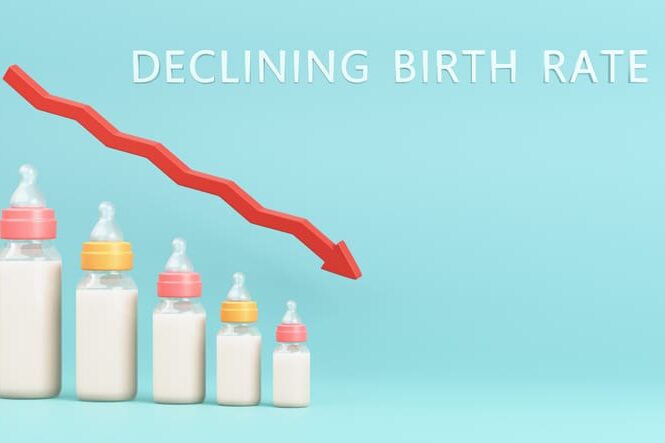
Falling birthrates in many countries suggest the global population could shrink by 2125. Fewer people doesn’t necessarily mean less progress , in fact, it may mean more resources, better education, and improved healthcare for those who remain. Smaller families may invest more deeply in each child’s growth, while automation and robotics handle the bulk of production and services. Cities may feel less crowded, but they could also be highly efficient, with infrastructure designed for comfort rather than density. Economies may have to shift away from models that rely on constant population growth, embracing systems where quality of life and technological advancement matter more than sheer numbers.
3. Earth Could Be Reorganized by Climate Zones
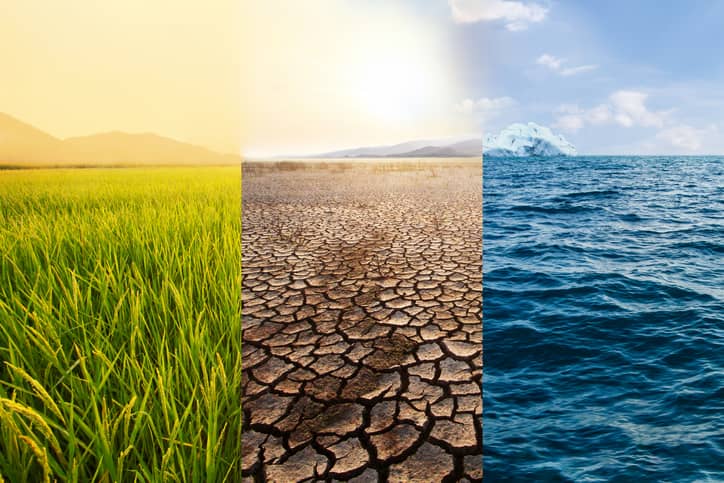
Rising seas, shifting weather patterns, and expanding deserts may redraw the map of human society. Instead of focusing on nations as we know them, future political alliances could be built around climate regions. Communities facing frequent flooding might form networks to share resources, while desert regions could unite to manage water and energy. Entire coastal areas may be abandoned, while new cities rise in safer zones. This reorganization would change not only how people govern but also how they identify themselves , not by nationality alone, but by the challenges of their climate. In this world, survival and adaptation may bind people together more tightly than flags or borders.
4. Megacities Could Dominate Habitable Land
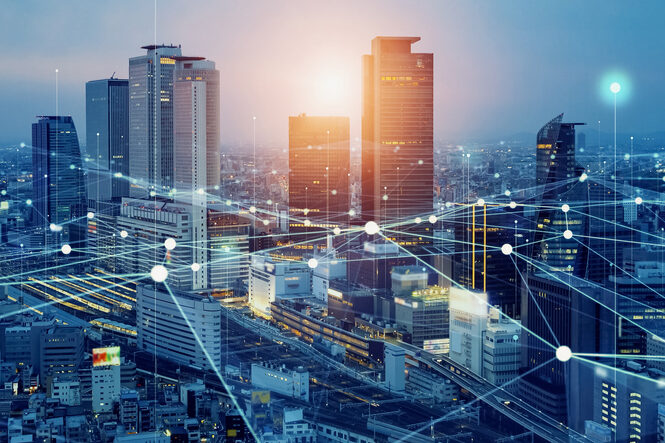
By 2125, fewer but larger cities may define human life. These megacities could house tens of millions of people in structures designed to withstand climate shifts and resource demands. Imagine protective domes shielding entire districts from storms, underground levels stretching for miles, or floating platforms on rising seas. Within these cities, transportation could be largely vertical, with elevators and skybridges linking layers of activity. Meanwhile, much of the rural land may return to wilderness or be set aside for high-tech farming. Life in megacities could feel like living inside a massive ecosystem of technology and human connection, offering safety, convenience, and culture in ways we can barely picture today.
5. Space Settlements May Be Independent
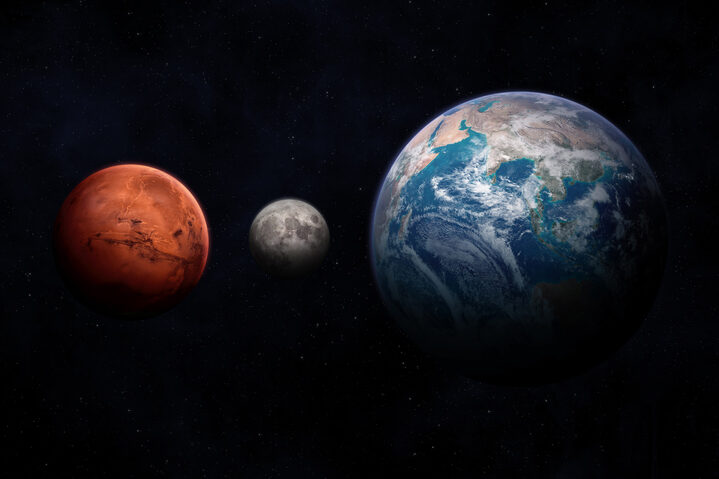
Colonies on the Moon and Mars may no longer be small outposts but thriving societies with their own cultures, economies, and governments. Just as colonies on Earth once sought independence from distant empires, space settlers could push to make decisions without Earth’s control. Over time, they may develop unique traditions shaped by their environments , such as lunar festivals tied to Earth’s phases or Martian sports adapted to low gravity. Trade between planets could be vital, but disputes over resources and governance might also arise. The first interplanetary independence movements could become one of the defining political stories of the 22nd century.
6. Interplanetary Travel Could Feel Like Today’s Airlines
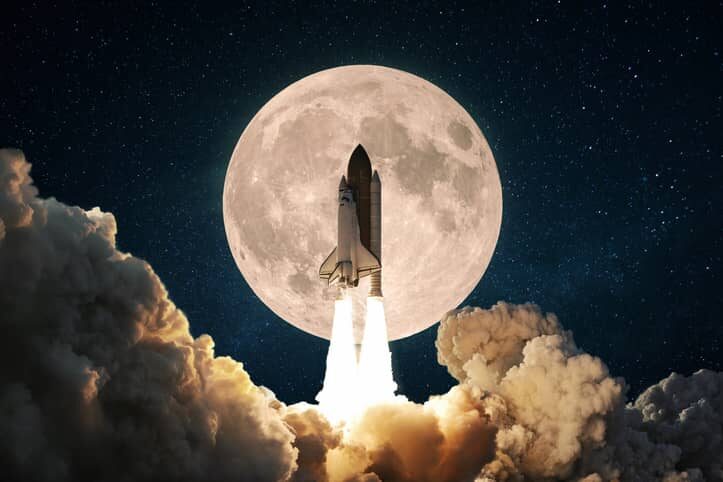
By 2125, space travel may be as routine as flying between countries today. Families could book tickets on sleek passenger rockets to visit relatives on the Moon or spend vacations on Mars. Luxury space liners may offer hotels in orbit with panoramic views of Earth, while budget carriers ferry workers and settlers back and forth. Travel times could shrink dramatically thanks to high-speed propulsion systems, making what was once a six-month journey feel more like a transatlantic flight. Just as air travel reshaped the 20th century by bringing cultures closer, interplanetary travel could shrink the solar system into a neighborhood, changing how people think about distance, belonging, and home.
7. Fusion Energy Could Power Civilization
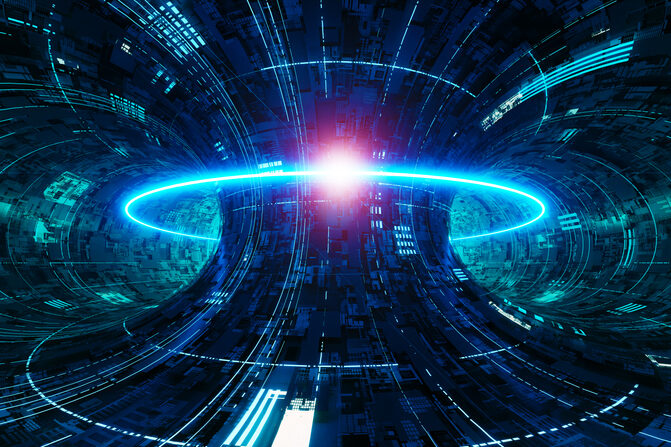
If scientists perfect nuclear fusion, the world could have a nearly limitless source of clean, safe energy by 2125. Unlike fossil fuels, fusion produces no harmful emissions, and unlike current nuclear power, it carries minimal waste and meltdown risk. With abundant power, entire cities might run without concern for shortages, and space settlements could beam excess energy back to Earth. The impact on daily life could be enormous: affordable electricity everywhere, advanced technologies operating without cost barriers, and new industries that thrive on energy abundance. Fusion could also help heal the planet, as dependence on oil and coal fades into history.
8. AI Could Run Entire Governments
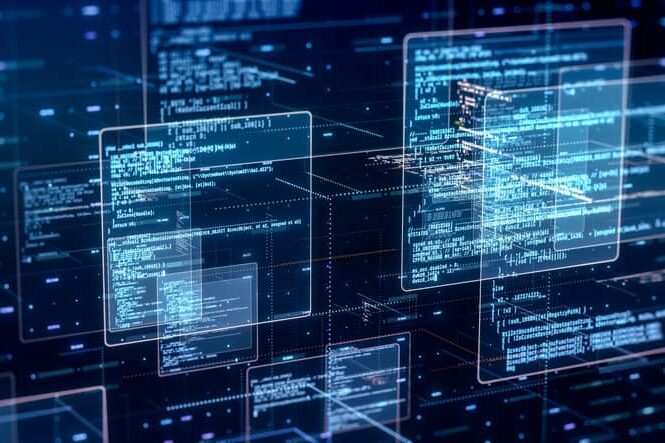
Artificial intelligence may evolve to the point where managing economies, justice systems, and resources is more effective when left to algorithms rather than human officials. Citizens might still vote on major issues, but AI could handle everything from balancing budgets to ensuring fair trials, reducing corruption and inefficiency. While some may celebrate this as a step toward fairness and precision, others might worry about freedom and control. Questions like “Can a machine truly understand human needs?” may shape political debates. By 2125, we could see entire nations trusting AI with leadership, sparking both innovation and controversy in governance.
9. Work May Barely Resemble Today
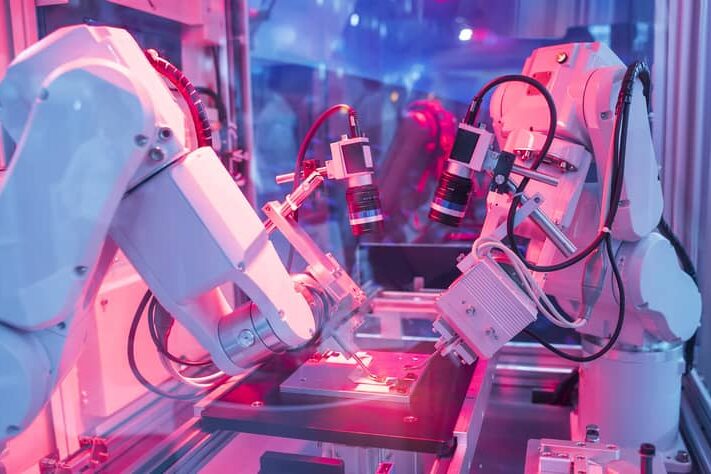
With machines handling most physical and mental labor, work could look entirely different in 100 years. AI may take over calculations, robotics could handle production, and automated systems may run logistics at global scales. Human jobs might shift toward creativity, leadership, and designing new solutions, or people might choose not to work at all, supported by universal incomes funded by machine productivity. “Careers” could be redefined, with individuals pursuing passion projects, art, or scientific exploration rather than working for survival. Work may become less about necessity and more about purpose, reshaping how people view identity and achievement.
10. Education Could Be Experience-Based
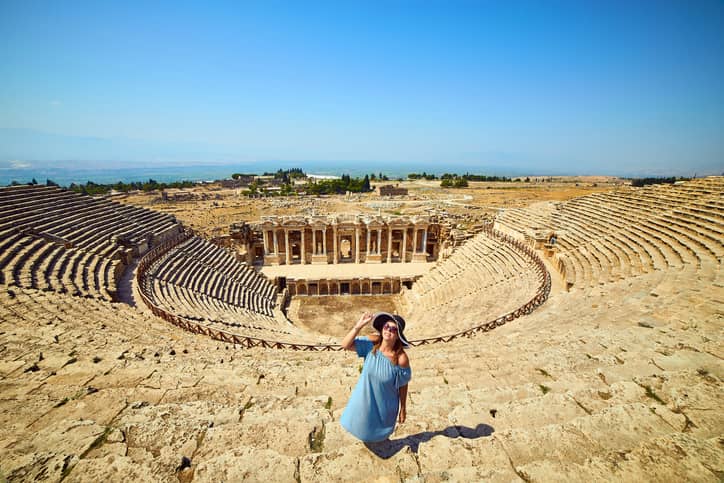
Schools in 2125 may trade textbooks and lectures for immersive, hands-on learning. Imagine students stepping into historical simulations where they can walk through ancient Rome or practice diplomacy during world-changing events. Future doctors could train in virtual labs where they perform surgeries with no risk, while young engineers test inventions with AI tutors offering instant feedback. Learning may be tailored to each child’s pace, with knowledge uploaded or practiced in ways that feel like real life. Instead of memorization, education could focus on exploration, problem-solving, and creativity, preparing generations for a world where adaptability matters more than facts alone.
11. Religion Could Expand Beyond Earth

As humanity spreads into space, faith may adapt to new frontiers. Traditional religions could extend their practices to the Moon, Mars, and beyond, with sacred sites and rituals observed under alien skies. At the same time, entirely new belief systems may emerge, inspired by the cosmos and humanity’s role within it. Space settlers may see themselves as pioneers fulfilling a spiritual mission, giving rise to fresh traditions centered on unity, survival, or the stars themselves. Religion could remain a vital part of human identity, reshaping itself to fit the vastness of the universe.
12. Animals Could Be Re-Engineered
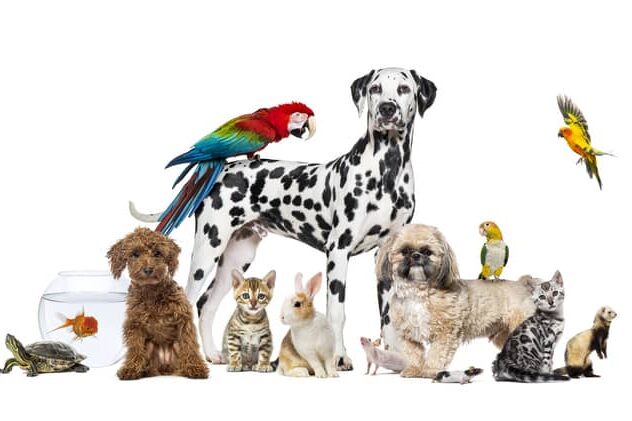
By 2125, genetic science may transform the animal kingdom. Pets could be bred or engineered for longer lifespans, giving families companions that live as long as they do. Livestock might be designed specifically for space farming, thriving in low-gravity environments or artificial habitats. Extinct animals could be revived, not as perfect replicas, but as hybrids adapted for new climates. Beyond necessity, people may design animals for companionship, with entirely new species crafted to bond with humans. Such changes would blur the line between natural and created life, raising fascinating , and ethical , questions.
13. Wildlife May Flourish in Abandoned Regions
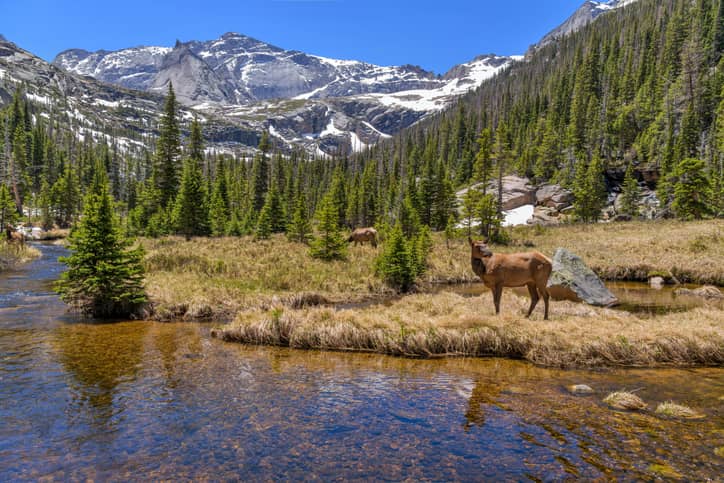
As megacities pull people inward, vast stretches of rural land may return to wilderness. Old towns and highways could be reclaimed by forests, wetlands, and animals once pushed to the margins. Species threatened today may thrive again, while ecosystems stabilize in areas free from human activity. In some places, efforts to “rewild” could accelerate this process, creating sanctuaries where nature grows largely undisturbed. Ironically, the same century that sees humans dominate more of the planet than ever before might also be the one where wildlife finds unexpected space to rebound.
14. Space Farming Could Feed Millions
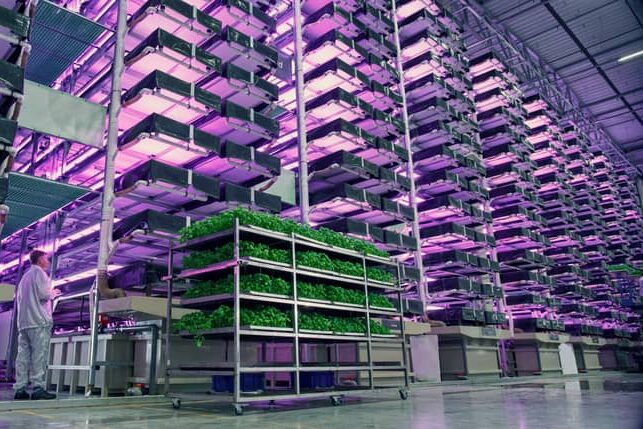
Colonies on Mars, the Moon, or orbiting stations may rely on advanced farming techniques to survive , and eventually, to supply Earth. Hydroponic systems, vertical farms, algae cultivation, and lab-grown protein could form the backbone of interplanetary agriculture. These methods could produce enormous quantities of food in small, controlled spaces, free from weather or soil limits. The surplus may be shipped back to Earth, reshaping diets and reducing pressure on farmland. Space farming could help solve food scarcity while driving innovation in sustainable agriculture for both planets.
15. Entertainment Could Be Fully Immersive
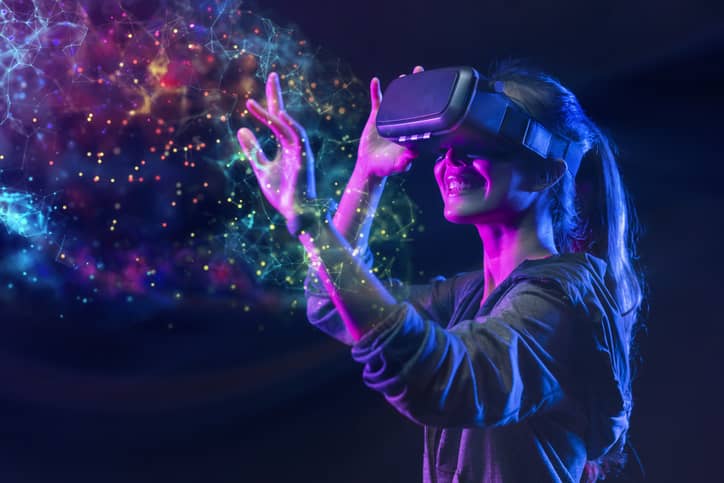
By 2125, movies, games, and virtual experiences may merge into interactive worlds indistinguishable from reality. People could step into their favorite stories, living out adventures as the main characters or exploring entirely new universes. Friends across planets might gather inside the same digital environment, making distance irrelevant. Entertainment may shift from something you watch to something you live, with sensory immersion allowing people to see, feel, and even smell their experiences. These alternate lives could blur the line between leisure and reality, offering escapes that are richer and more compelling than ever before.
16. Families Could Stretch Across Planets

In the 22nd century, it may be common for families to live on different worlds. A child could be born on Earth but raised on Mars, while grandparents remain on the Moon. Family gatherings might mean traveling across planets or connecting in immersive virtual spaces that make distance feel irrelevant. Traditions like birthdays or holidays could take on new forms, shaped by interplanetary time zones and travel schedules. Just as families today adapt to living across continents, future generations may consider it normal to stretch across the solar system, blending Earthly roots with extraterrestrial lifestyles.
17. Life Expectancy Could Reshape Generations
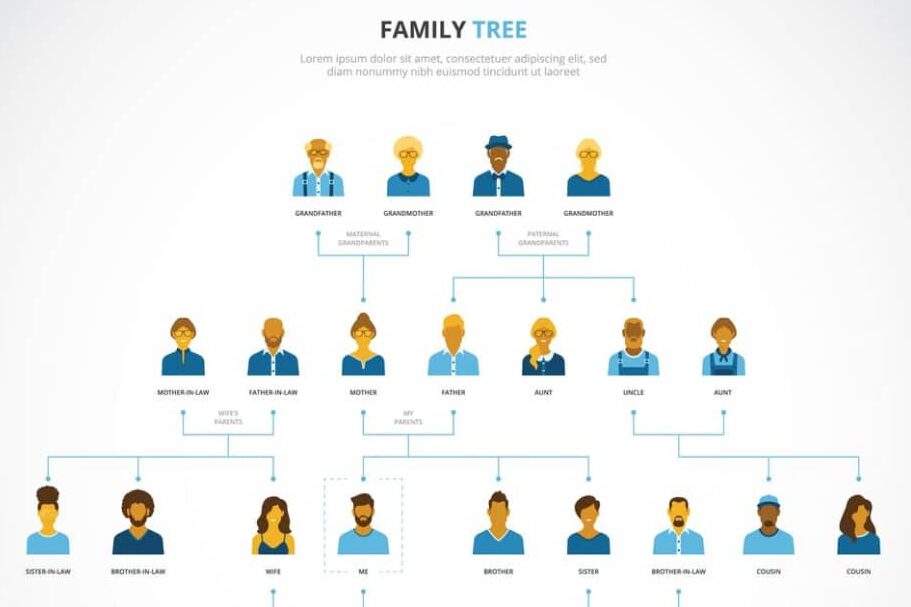
If people routinely live 120 to 150 years, family trees could look very different. Four or even five generations might be alive at once, creating new traditions and challenges. Great-great-grandparents might share memories with toddlers, while inheritance and retirement systems may need complete redesigns. The definition of “young” and “old” could shift, with 70-year-olds still raising children or starting new careers. A longer life may give people more opportunities to explore, but it could also reshape how society thinks about aging, responsibility, and what it means to leave a legacy.
18. Politics May Shift From Nations to Species Survival

By 2125, humanity’s biggest political debates may no longer be about individual countries but about survival as a species. Should humans remain purely biological or enhance themselves with technology? How should resources be shared between Earth and space colonies? Should humanity prepare to settle beyond the solar system? These questions may dominate global politics, uniting or dividing people based not on nationality but on philosophy. Political identity could become more about the future of humanity itself, marking a shift from local concerns to decisions that define existence on a planetary or even interplanetary scale.
19. Humans Could Merge More Deeply With Machines

Technology may advance to the point where cyborg enhancements are as common as smartphones are today. People could have implants that boost memory, vision that sees beyond the visible spectrum, or physical strength enhanced by bionics. Knowledge banks might be uploaded directly to the brain, reducing the need for traditional study. Such changes could create a world where the line between human and machine blurs, raising questions about identity and equality. Will enhanced humans hold advantages over those who choose to remain natural? By 2125, merging with machines may be seen as just another step in human evolution.
20. Consciousness Transfer Could Be Possible
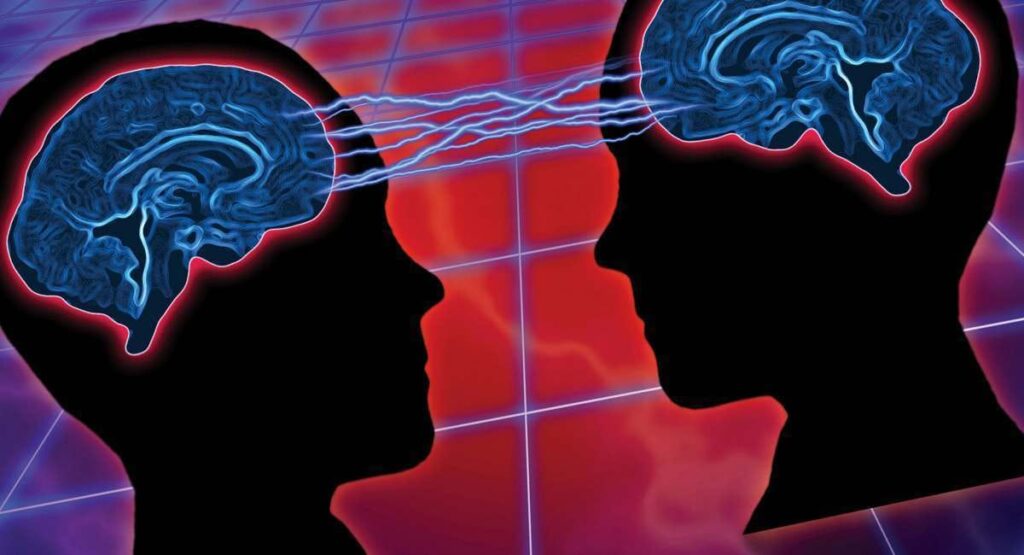
One of the most radical possibilities is transferring consciousness into machines or cloned bodies. If perfected, this could make human lifespans nearly indefinite, allowing people to exist in digital form or move between physical hosts. Such technology could change everything from family life to law, as questions of identity and authenticity arise. If a person is copied, which version is truly them? Could multiple versions exist at once? For some, consciousness transfer may offer liberation from mortality, while for others, it could spark deep ethical debates. By 2125, humanity might face the reality of redefining what it means to be alive.
21. Climate Refugees Could Redefine Borders
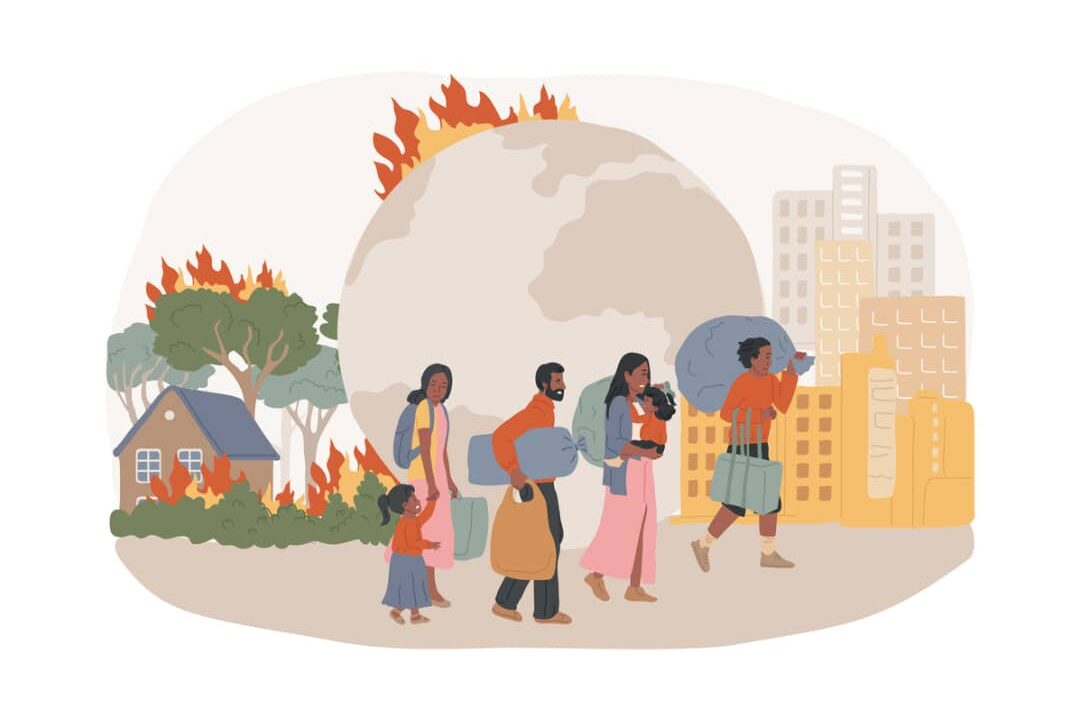
By 2125, rising seas and extreme heat may displace hundreds of millions of people, creating entire populations of climate refugees. New nations could form from these migrant communities, blending diverse cultures into fresh identities. Borders as we know them may shift or dissolve, replaced by flexible regions that prioritize survival over geography. Cities may grow into multicultural hubs shaped by these movements, while global cooperation may become essential to prevent conflict. The story of climate migration could redefine what it means to belong, reshaping the human map in unexpected ways.
22. New Species Could Appear
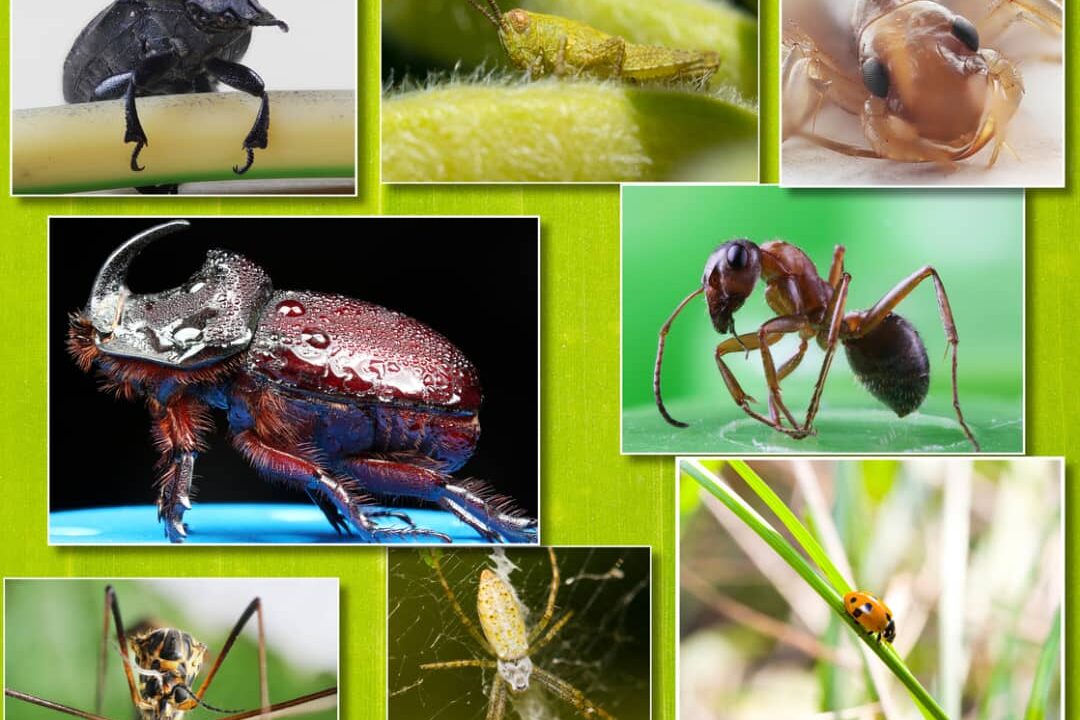
Evolution never stops, and by the next century, noticeable changes may emerge in the natural world. Insects, bacteria, and small adaptable animals could evolve rapidly to survive urban or altered environments. Some species may thrive in megacities, adapting to artificial light, pollution, and human presence, while others flourish in the rewilded lands left behind. Over 100 years, entirely new hybrids of animals and plants may appear naturally or through human influence. Just as people today marvel at how wolves became dogs, future generations may witness the rise of creatures uniquely shaped for the 22nd century.
23. AI Companions Could Replace Relationships
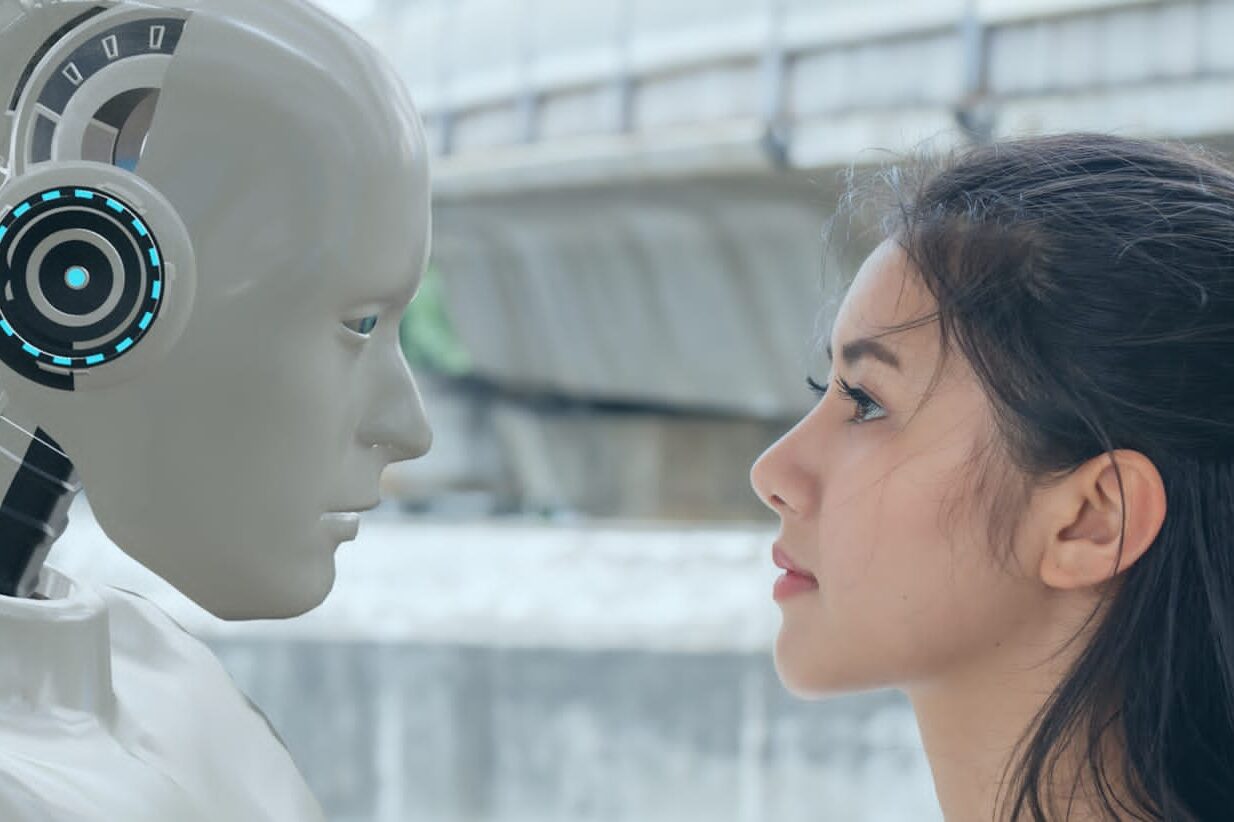
Artificial intelligence may evolve into companions so advanced that they rival human connection. These digital or robotic partners could provide emotional support, friendship, or even romantic bonds tailored to individual needs. For some, AI companions may offer stability and understanding in ways human relationships cannot. For others, they may raise questions about authenticity, intimacy, and what it means to love. By 2125, AI relationships may be common and accepted, expanding the definition of family and companionship in ways that challenge today’s ideas of connection.
24. Death May Be Redefined
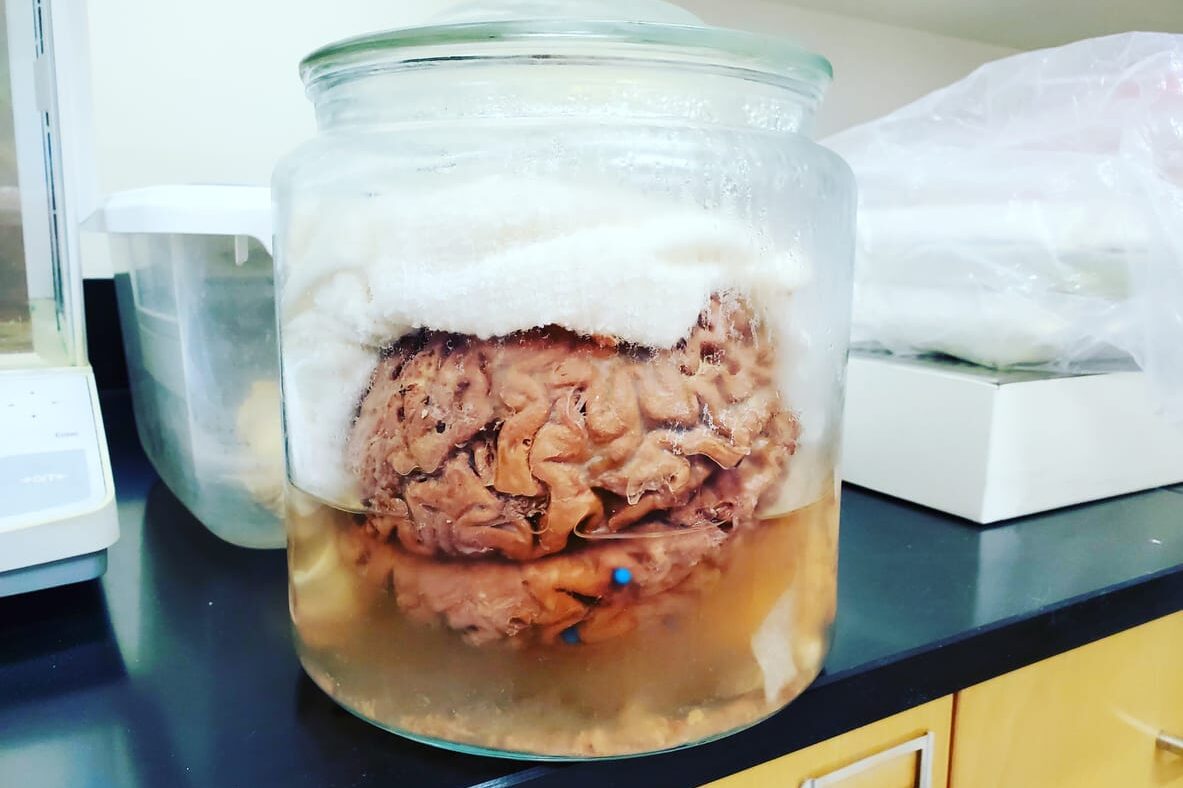
With organs that regrow, diseases eliminated, and consciousness possibly transferable, death itself may no longer mean what it does today. People could choose when or whether to die, turning mortality into a personal decision rather than an inevitability. Some may live indefinitely in digital form, while others might prefer natural lifespans. This shift could change how societies view grief, legacy, and meaning, raising questions about purpose when life is no longer finite. For future generations, death may be less of an ending and more of a choice.
25. Humanity Could Still Surprise Itself
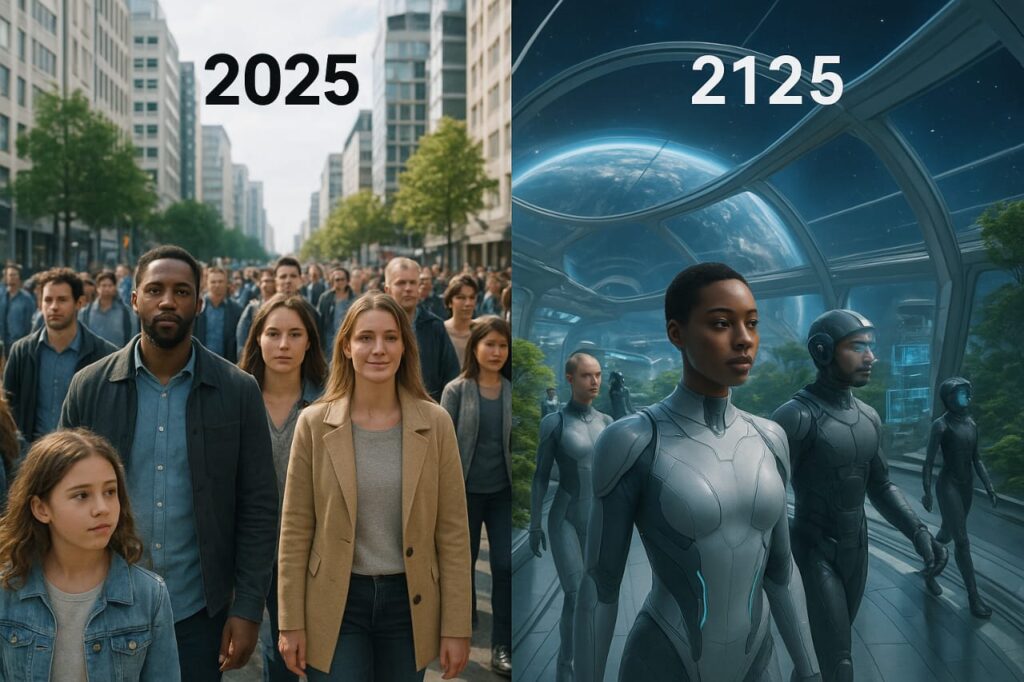
Even with all these predictions, the most certain truth about the future is that it will surprise us. Just as people a century ago never imagined smartphones, the internet, or space stations, 2125 may bring inventions beyond today’s imagination. Some changes may be breathtaking, others unsettling, but all will shape humanity in ways we cannot fully foresee. The next century may not follow a script , it will likely be stranger, richer, and more unpredictable than any forecast. The only certainty is that humanity will continue to adapt, create, and discover.
This story 25 Predictions About What Life Could Look Like 100 Years From Now was first published on Daily FETCH


